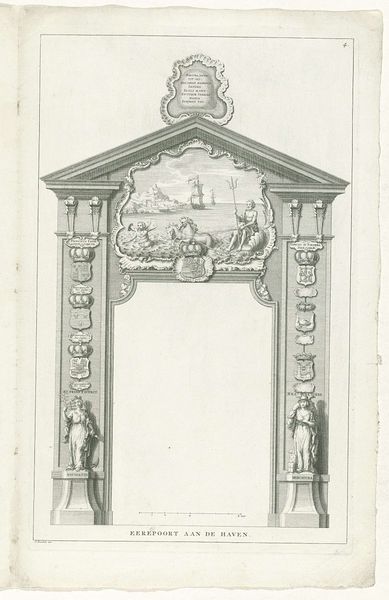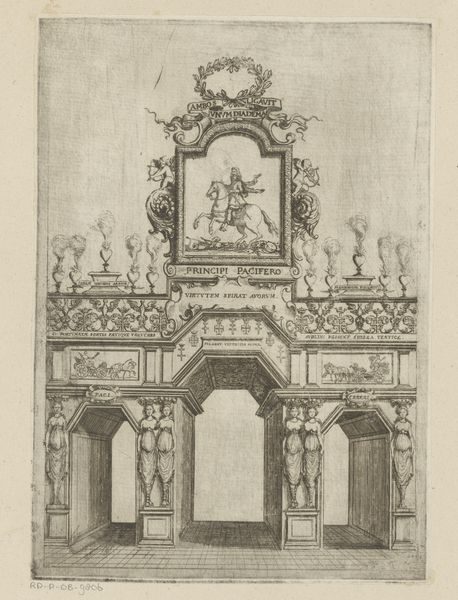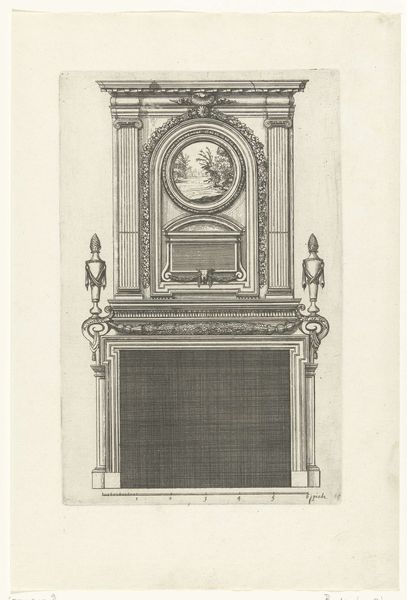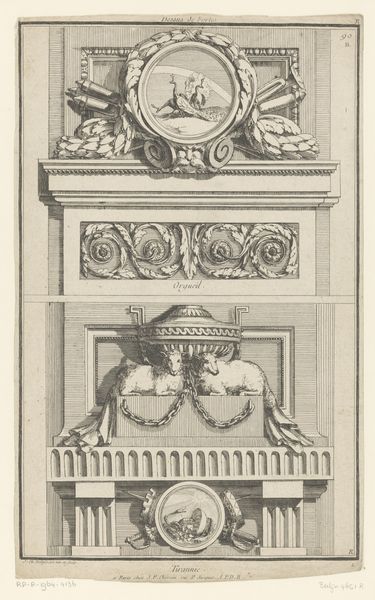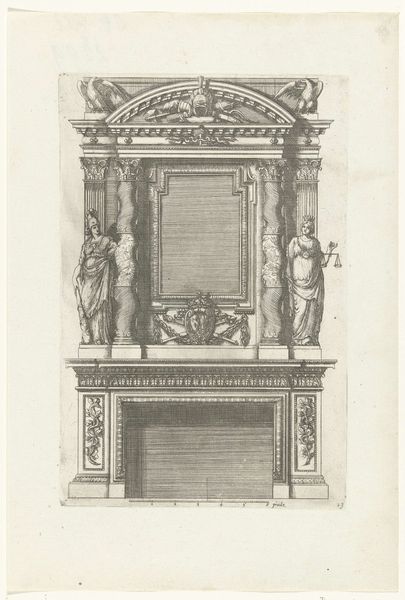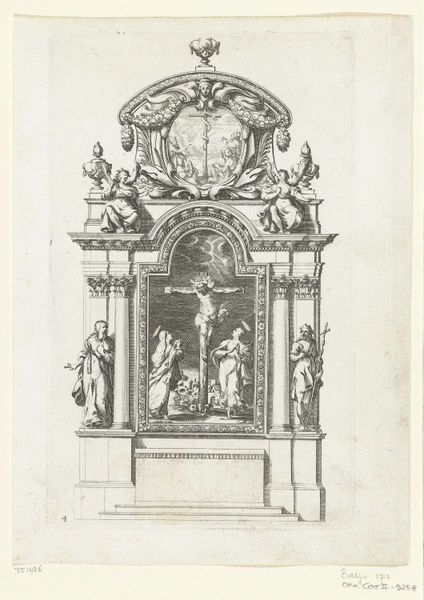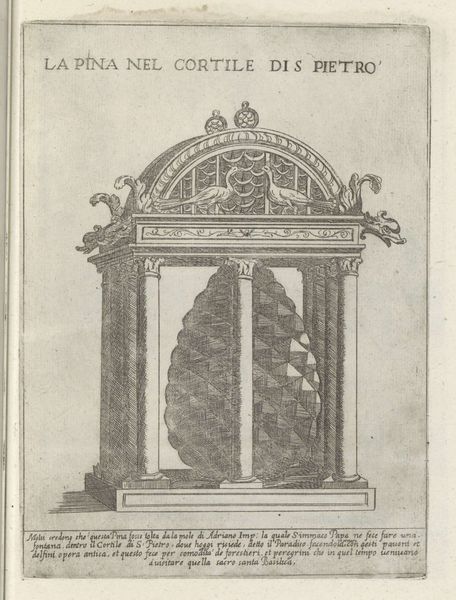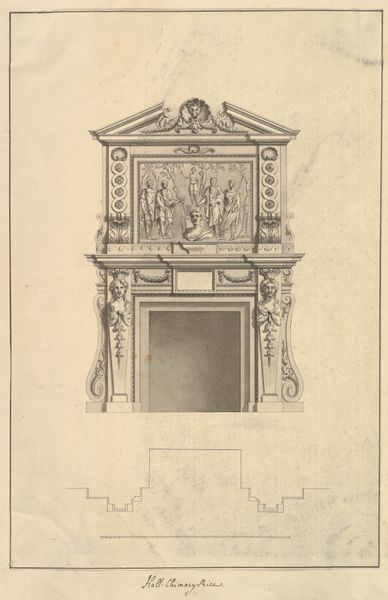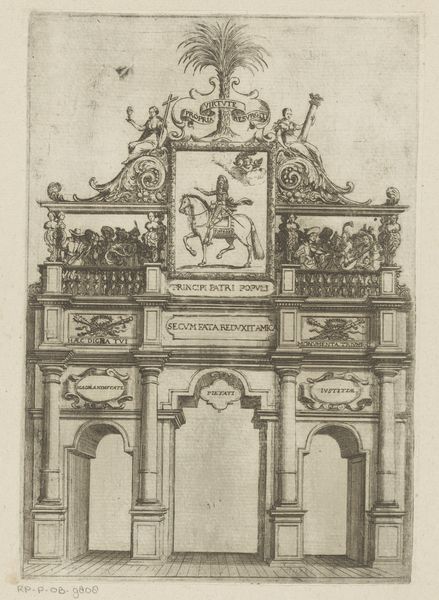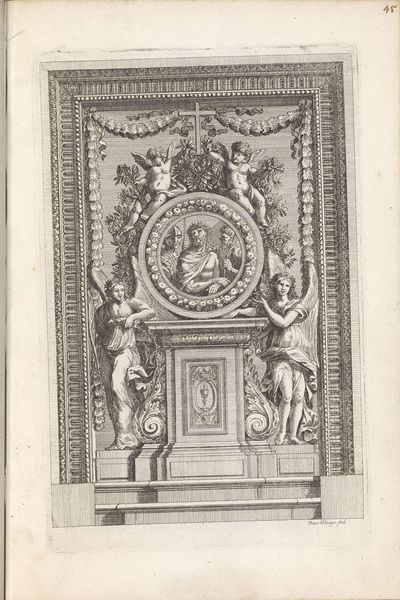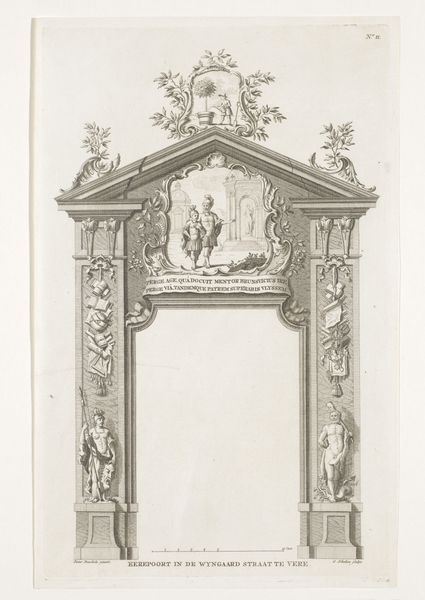
drawing, print, etching, engraving, architecture
#
drawing
#
neoclacissism
# print
#
etching
#
etching
#
history-painting
#
engraving
#
architecture
Dimensions: height 202 mm, width 128 mm
Copyright: Rijks Museum: Open Domain
Antoni Zürcher's etching from 1816 depicts the Erepoort on the Reguliersplein, dominated by potent symbols of power and identity. Above, we see the Dutch coat of arms flanked by crowned lions, emblems of sovereignty and strength. Flags add to the atmosphere of national pride and identity. But let’s delve deeper. Arches, like this one, go far back; triumphal arches were common in ancient Rome, erected to honor military victories and emperors. Yet their symbolism transcends mere celebration. Like a doorway, the arch represents transition, passage, and the crossing of thresholds – both physical and metaphysical. This is reminiscent of ancient city gates, not just as points of entry, but also as protective boundaries imbued with ritual significance. The eternal flame hanging in the center is interesting: We find this motif used across cultures, from the Vestal Virgins of Rome to modern war memorials. It is rooted in our collective psyche as a symbol of memory, vigilance, and the enduring spirit. These motifs, steeped in history, trigger a powerful, almost primal response. They tap into our shared cultural memory, reminding us that symbols endure, evolving through time, yet forever echoing the hopes, fears, and aspirations of humanity.
Comments
No comments
Be the first to comment and join the conversation on the ultimate creative platform.
